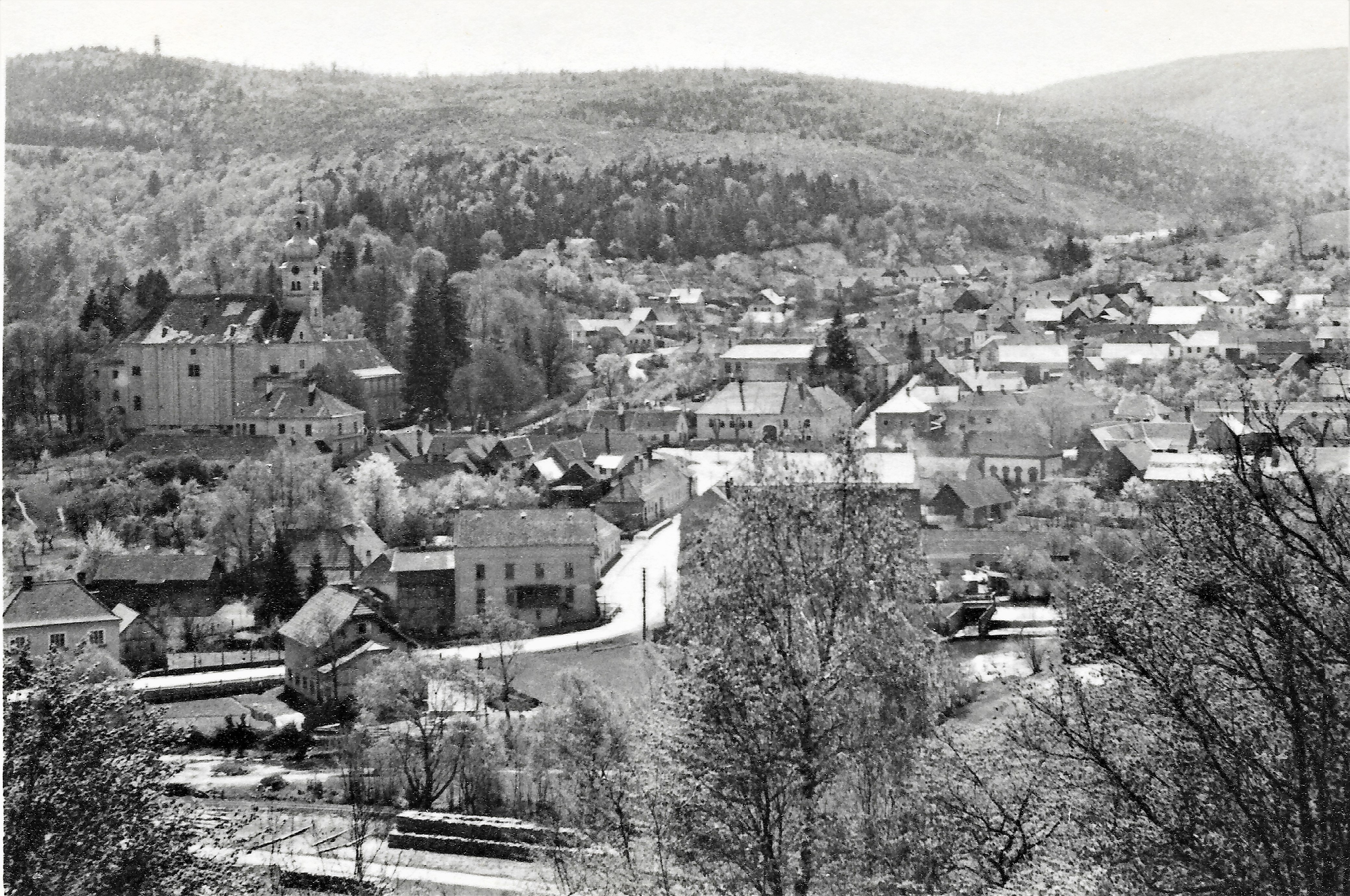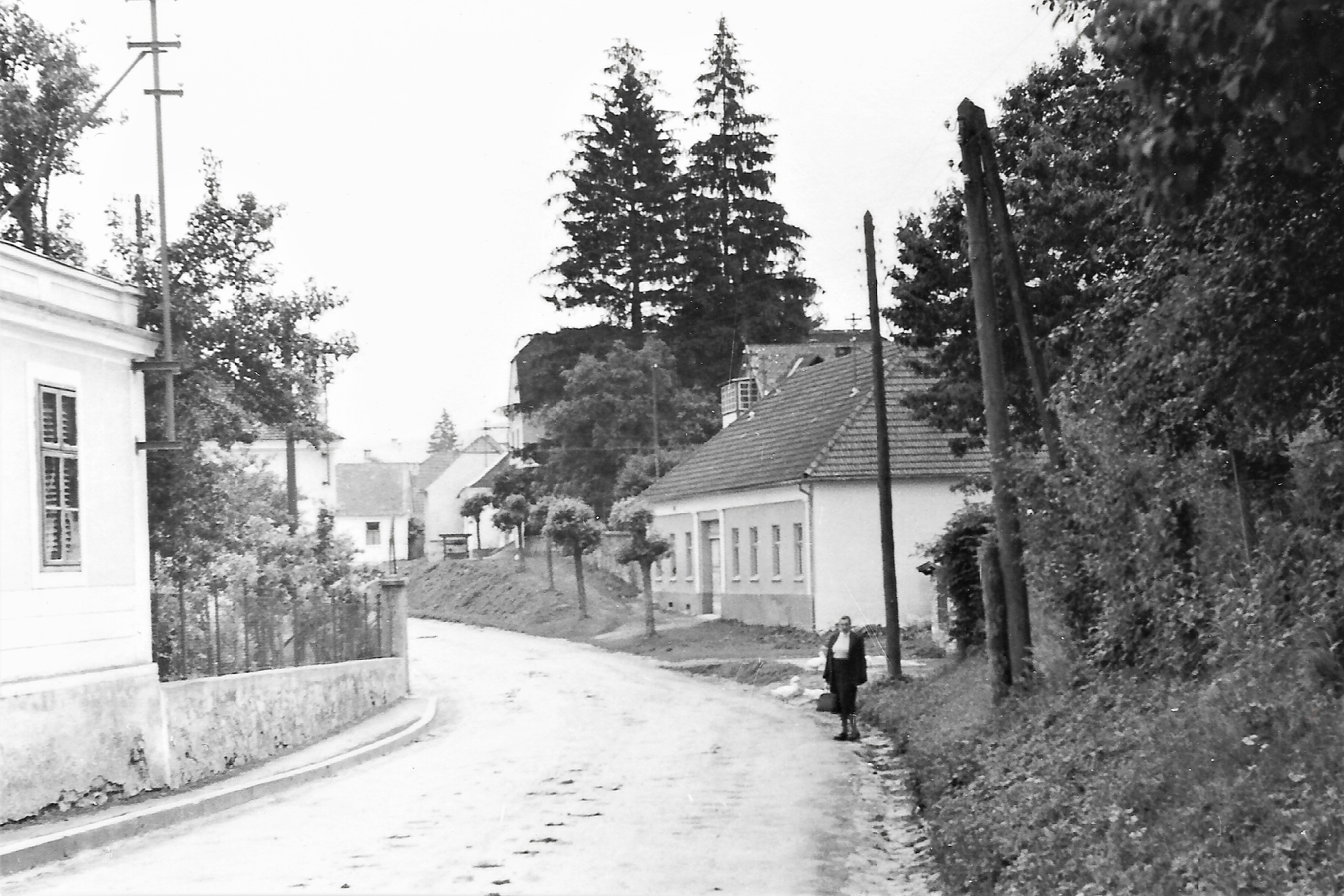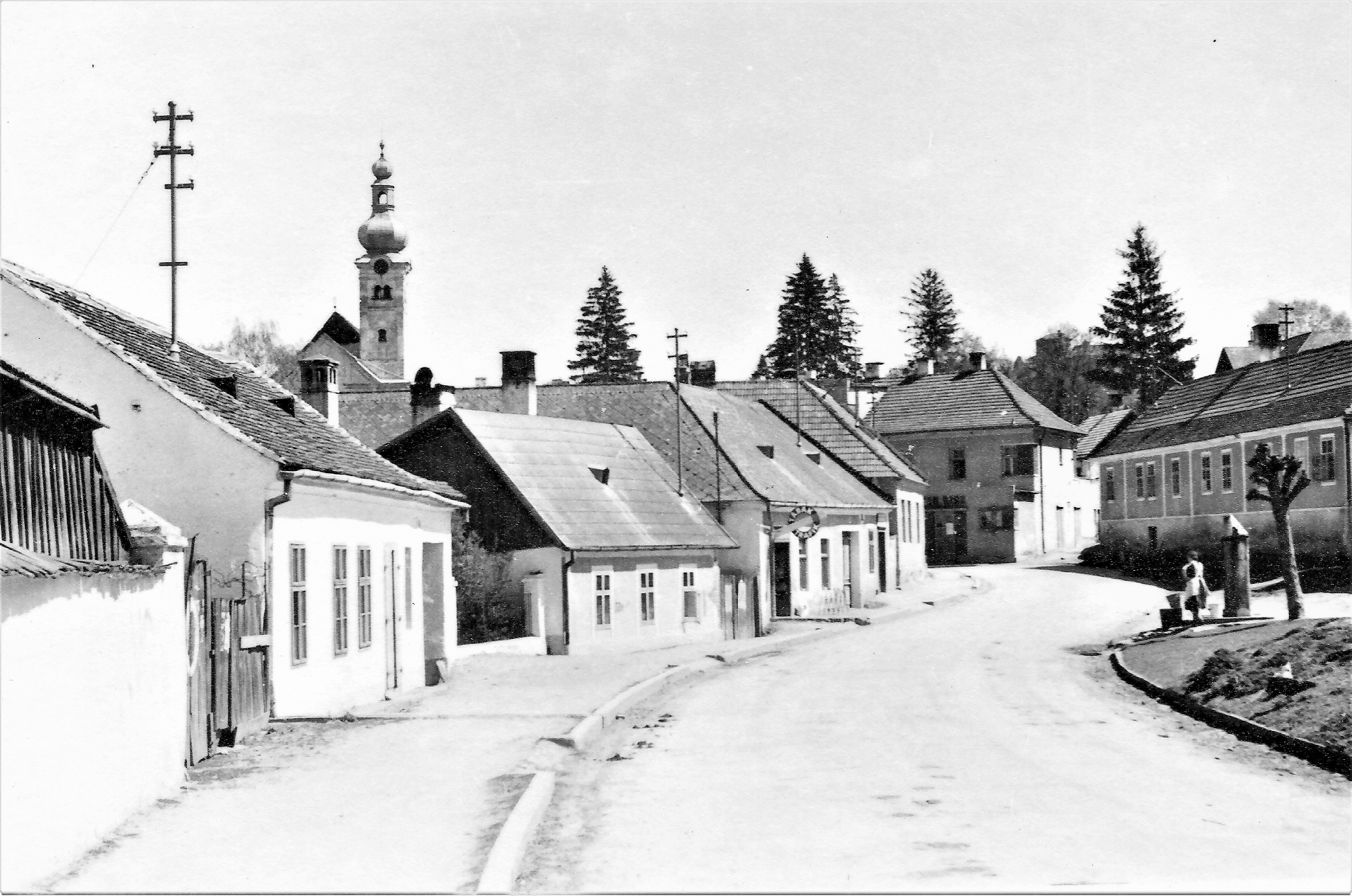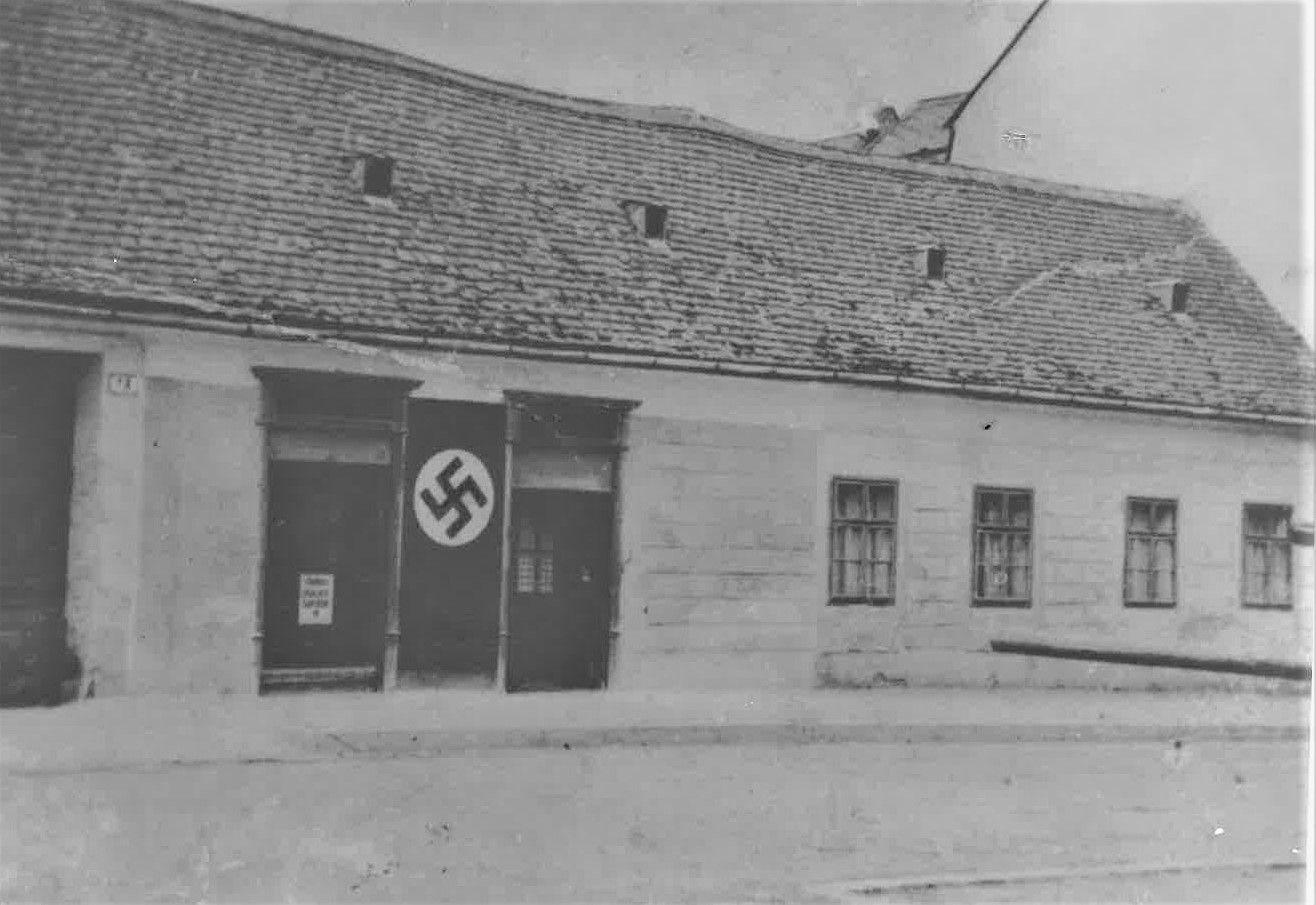Jewish Life in Lockenhaus
by Mag. Denise Steiger
In the history of the Burgenland-Western Hungarian region, Jewish history and culture form an important part. In particular, the history of rule in this region played a significant role in the development of Jewish culture, as Jews found protection over the centuries, especially in the dominions of the Esterházy family in northern and central Burgenland and the Batthyány family in southern Burgenland. The foundation of the "Seven (holy) Jewish communities" in Deutschkreutz, Eisenstadt, Frauenkirchen, Kittsee, Kobersdorf, Lackenbach and Mattersburg followed the expulsion of the Jews from Vienna in 1670/71 and they developed into important Jewish Orthodox communities in Europe. In the south of Burgenland Jewish communities were established in Schlaining, Rechnitz and Güssing.
Only after 1860 did Jews receive full civic equality and from then on were able to settle and acquire land outside these "Schutzjudengemeinden". In the first period Jewish families settled in many places in Burgenland. Although the number of places with Jewish inhabitants later decreased again, Jewish families still lived in many Burgenland villages until 1938.

Lockenhaus
The diocesan schematism from 1802 mentioned 5 Jews in Lockenhaus (about one family), according to it no Jews seem to have lived in Lockenhaus until about 1840. Around the middle of the 19th century Maier Stössel and Johann Hoffmann from Lackenbach and Jakob Leitner from Schlaining, in 1851 Salomon Kopfstein from Lackenbach settled in Lockenhaus. The father of Salomon Kopfstein, Simon, had been recognized as a protective Jew of the Esterhazy rule in Lackenbach since 1819. As a result of a certificate issued by the municipality of Lackenbach and an appraisal by the Ödenburger Bezirkskommissariat, Simon´s son Salomon was admitted to Lockenhaus in 1851 and opened a general store (Klostergasse 6). Kopfstein's brothers Abraham and Isak also lived in Lockenhaus, later Abraham moved to Unterrabnitz and Isak Kopfstein went to Pilgersdorf. Salomon Kopfstein exchanged his house in 1880 for that of the baker Josef Moser (Hauptstraße 12) and also opened a general store here. After his death his son Maurus took over the business and house. Maurus (Moritz) Kopfstein sold the house to the master baker Alois Martin in 1910, after his death his son Franz Martin took over. The Kopfstein family moved from Lockenhaus to Nagy Tapolczany and later to Györ in Hungary. Today the house Hauptstr. 12 belongs to the family of the deceased former mayor Horvath.
Jakob Leitner bought the place of the former fire pond, which had dried up and left swampy ground behind. On this place in Hauptstraße 14 Leitner built a residential house, which also housed a large shop for general merchandise, iron, etc. The house was at ground level and Leitner paid the lordship 10 gulden water interest per year. In 1883 the Leitner family converted to the Catholic faith, and the shop was particularly popular from that time on. The son Wilhelm Leitner was not a good merchant. He had to sell the house in 1930 to the wood manufacturer Johann Braun, who had a completely new one-storey building erected in its place. The house Hauptstraße 14 is still owned by the Braun family today. The only daughter of Wilhelm Leitner moved to Ödenburg.
The families Stössel and Süss
The Stössel family was the largest and most influential Jewish family in Lockenhaus. Maier Isidor Stössel first (before 1856) bought the house Hauptstraße 38 and built a new one instead of the old one. To the right of the gate was the shop, to the left the leather store. Maier Stössel had two sons, Max bought the house Hauptstraße 13 in 1869, Wolf took over the business from his father. His father Maier Stössel bought the house Hauptstraße 21 from Anton Haubenwallner, converted it and built a Jewish prayer house with a mikva in the courtyard around 1880. The Jews of the whole area came together here at the main Jewish festivals. After the expulsion of the Stössel family in March 1938, the NSDAP set up its party headquarters in this house. The property fell to the community, the prayer house was looted and destroyed. After the war, the former residential house was bought by the master confectioner Heiling, the place of the former prayer house was bought by Ludwig Schranz. Today the house of the Kerschbaum family stands on this site.

Max Stössel ran a cutlery shop (Hauptstr.13), besides he also traded with agricultural tools, Wolf Stössel ran a leather, flour and iron shop (Hauptstr.38). Both brothers became very wealthy. Because of the 1st World War and the following inflation the family of Wolf Stössel lost their property, had to sell their house and moved to Oberwart.
The house (Hauptstr.38) was bought by the then district jewish doctor Dr. Samuel Alexander Süss (Szüsz), born 1864 in Kisjenö, studied in Vienna, and furnished it for himself as an apartment. In 1938, Dr. Süss had to leave Lockenhaus together with his disabled daughter Irene. Irene was deported to Maly Trostinez, her father to Theresienstadt. Both died in 1942. There is a death notice from Dr. Süss from Theresienstadt dated December 1942, which states that the cause of death was a cardiac insufficiency caused by a heart muscle degeneration. The former residence of the Süss family was administered as a Nazi property. During World War II, the order customs commissioner's office was housed here. After the war the house was bought by Leopoldine Gmeindl, the widow of the police (gendamarie) commander Gottfried Gmeindl. The Gmeindl family still lives in the house today.
Also the business (Hauptstr.13) of Max Stössel and his sons Samuel Eliezer and Nathan Ignaz went very badly after the World War I. However, this branch of the Stössel family remained in Lockenhaus until 1938. In 1938 the members of this family were expelled by the National Socialists, the building became Nazi property. Nathan Ignaz Stössel and his family managed to emigrate to England, as daughter Janka was already living in London. His sister Jultscha, sister-in-law Berta and their son Meir were deported to Poland and murdered in 1942. After the war the house was bought by the master tailor Konrad, who sold it on to the master baker Ludwig Schranz. The Schranz family ran a SPAR shop and a bakery for many years, later the chimney sweep master Herbert Baumrock bought the house. The current owner is Martina Szondi, teacher at the school (Neue Mittelschule) in Lockenhaus.
There were also victims of the Holocaust from the family of Wolf Stössel, whose members had lived in Lockenhaus for many years. Son Emanuel and his wife were murdered in Lodz in 1941. The elder son Max Mordechai Zwi, who had also worked in his father's shop in Lockenhaus, was deported to Poland with his entire family (wife Recha and five children), where all, except son Moritz, were murdered in Auschwitz in 1944. Moritz Stössel died in the spring of 1945 in Dachau.

The Family Hoffmann-Hacker
The Jewish merchant Johann Hoffmann bought the house Hauptstraße 33 around 1869 from the cloth maker Georg Schmall, then also the house belonging to Schmall's brother Josef. Hoffmann ran a general store here. His daughter Hermine married Moritz Hacker from Vienna, who continued the business. This business also did not go very well in the years 1925-38. In 1938 the Hacker family was also driven out of Lockenhaus. After the war Karl Rahberger bought the house including the garden and ran a plant nursery there. The house is still owned by the Rahberger -Schermanski family today.
Peacefully side by side and together
For almost a century, from about 1850 to 1938, Jewish and non-Jewish inhabitants lived peacefully next to and with each other in Lockenhaus. In 1892 about 30 Jews lived in the market town. This number remained approximately the same until 1938. With a population of about 1200, this was a share of just under 3%. Despite this actually small number the Jewish fellow citizens of Lockenhaus contributed their part to the history and the economic life of the community. They were the merchants of the market town in the second half of the 19th and at the beginning of the 20th century. The community doctor was also Jewish. They had a lively spiritual and cultural life, so the Stössel family built a house of prayer where the Jewish citizens held their services. But there was no Jewish cemetery in Lockenhaus. The Jews buried their dead at the cemetery in Lackenbach.

With the annexation of Austria to Nazi Germany in March 1938, the peaceful coexistence ended. The Jewish families were forced to leave the village, which certainly triggered criticism from the local population. The gendarmerie command therefore felt compelled to justify itself on 23 April 1938:
"In the last few days, the Jewish families have voluntarily moved from Lockenhaus to Vienna, allegedly to relatives, taking all their everyday objects with them. The houses and properties and the entire inventory of these families have been taken over by the community for the time being. These families have therefore left Lockenhaus voluntarily in order to avoid being forced to leave by force, as is said, it has happened elsewhere. Because of these measures, there is a sense of discontent in certain circles of the population. Since neither the party leadership of the NSDAP in Lockenhaus nor the municipality has given the order for the departure, and since they left Lockenhaus of their own free will, no one can be blamed..." (Baumgartner, Fennes, Tschögl u.A., Arisierungen, 2004, 24f.)
Most Jewish families in Burgenland went to Vienna after their often violent expulsion. From there many managed to escape abroad, especially to the USA, Israel, Switzerland, England, Argentina and other countries. However, those who did not manage to escape in time were deported to concentration and extermination camps in Poland, Czechoslovakia (now the Czech Republic) and Germany.
Mag. Steiger Denise
It should be noted here that, as is known from other villages, it was not a "voluntary departure". Affected family members reported years later to their children in exile that they had been forced to leave their homes on the first day of Passover during the celebration of the Passover Seder. In 1938, this day was April 16, it was also Holy Saturday.
Quellen: Dr. Schermann Aegid, Geschichte von Lockenhaus, Pannonhalma 1936; Häuserchronik von OA Perl, Gemeindearchiv Lockenhaus; Festschrift Lockenhaus, hrsg. von der Marktgemeinde Lockenhaus anlässlich des 500 Jahr-Jubiläums der Markterhebung, 1992; Statistisches Jahrbuch, Burgenland 1982; Internetquellen: Yad Vashem, Zentrale Datenbank der Namen der Holocaustopfer (yad.vashem.org); Dokumentationsarchiv des österr. Widerstandes, Datenbank der Opfer des Holocaust (doew.at); Holocaust Opferdatenbank (www.holocaust.cz), Plattform zur Stammbaum-Erstellung (www.geni.com)